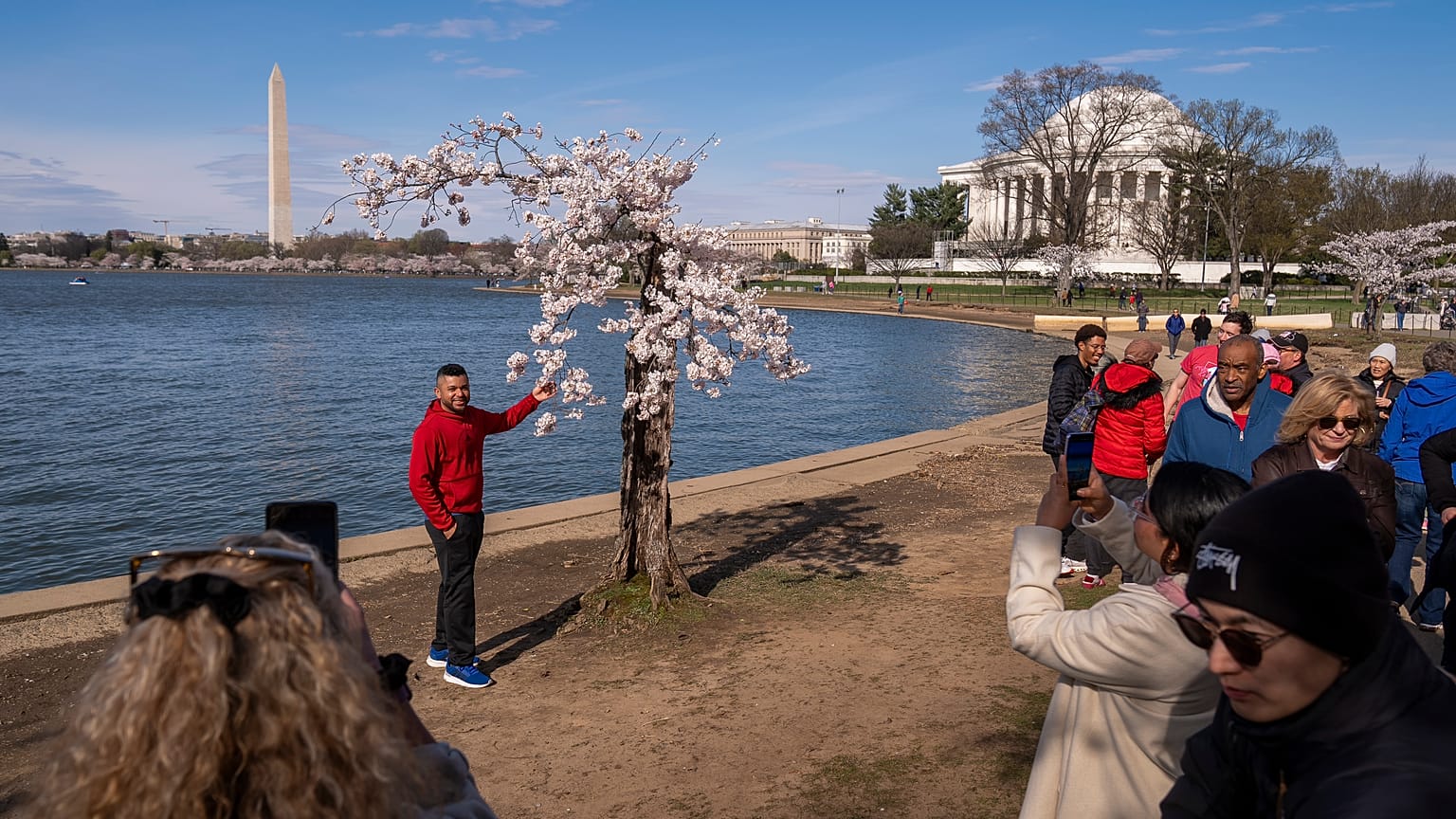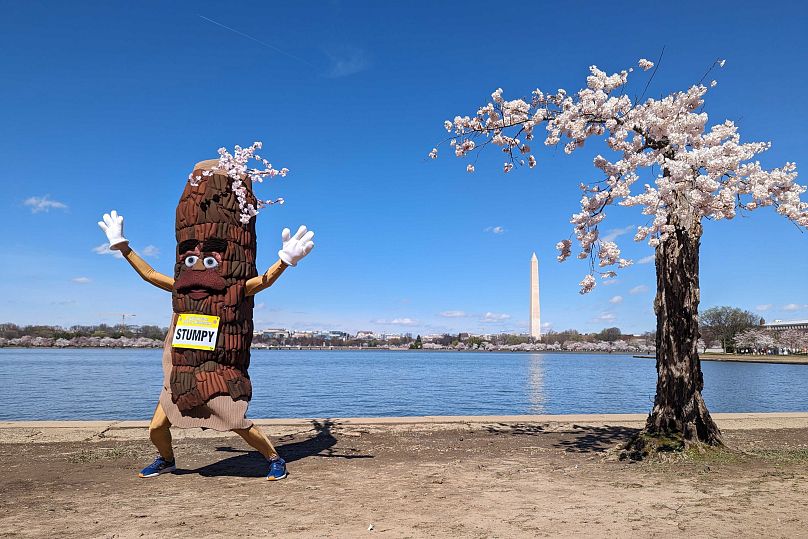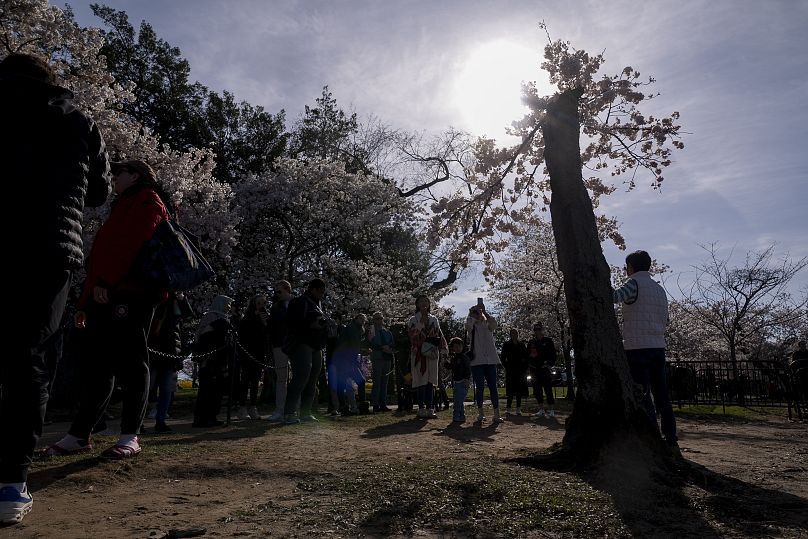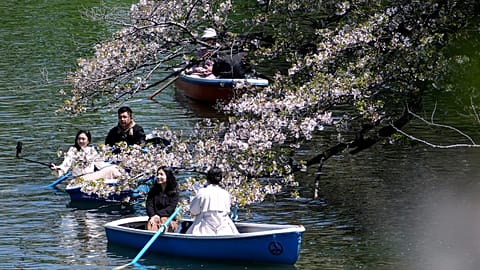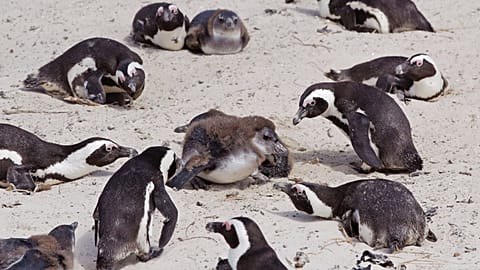Beloved social media star ‘Stumpy the Cherry Blossom’ is among the casualties.
Washington D.C. is famed for its iconic springtime cherry blossoms.
But 100 of them - including the social media phenomenon ‘Stumpy’ - are destined to be chopped down.
It's part of a multiyear restoration of their Tidal Basin home, which is being battered by climate change - from rising sea levels to rising temperatures.
Crumbling seawall creates flooding risks for cherry trees.
Starting in early summer, crews will begin working to replace the crumbling seawall around the Tidal Basin, the area around the Jefferson Memorial with the highest concentration of cherry trees.
The work has been long overdue, as the deterioration, combined with rising sea levels, has resulted in Potomac River waters regularly surging over the barriers.
The twice-daily floods at high tide not only cover some of the pedestrian paths, they also regularly soak some of the cherry trees' roots.
The $133 million (€123m) project to rebuild and reinforce the sea wall will take about three years, says Mike Litterst, National Park Service spokesman for the National Mall.
“It’s certainly going to benefit the visitor experience, and that’s very important to us," Litterst says. “But most of all, it’s going to benefit the cherry trees, who right now are every day, twice a day, seeing their roots inundated with the brackish water of the Tidal Basin.”
Litterst says entire stretches of trees to the water, as wide as 90 metres, have been lost and can't be replaced "until we fix the underlying cause of what killed them in the first place.”
Why are the cherry trees being cut down?
Despite efforts to save some, over 100 cherry trees will be cut down, with plans to replant nearly 300 trees as replacements.
The regular flooding at the Tidal Basin - sea levels have risen about 30cm since the seawall was built in the early 1990s - is just one of the ways climate change has impacted the cherry trees. Rising global temperatures and warmer winters have caused peak bloom to creep earlier in the calendar.
This year's peak bloom, when 70 per cent of the city’s 3,700 cherry trees will be flowering, should start between Saturday and Tuesday. By comparison, the 2013 peak bloom began on 9 April. By 2050, it could begin as early as mid-March.
“All the timing is off," Leslie Frattaroli, national resources program manager for the Park Service, told news agency The Associated Press in February “It’s a huge cascading effect.”
Already, large numbers of cherry blossom fans are being drawn to the area as the trees approach peak bloom.
Cloning Stumpy for future generations
Stumpy - a small but determined cherry tree named for its short stature - became a social media star during the pandemic. Its legacy has spawned T-shirts, a calendar and a fanbase.
Stumpy's final spring has prompted people to leave flowers and bourbon and had one Reddit user threatening to chain themselves to the trunk to save the tree.
"The humanity and the inspiration of this little tree is making a huge impact," sayssaid Deanna Gerstel Harris, a Washington DC resident. "This is incredible to see all the people coming on paying their respects to him for his last bloom."
The good news on Stumpy is that the National Arboretum plans to take parts of the tree's genetic material and create clones, some of which will eventually be replanted at the Tidal Basin.















